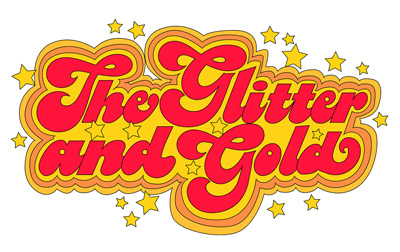Fourth Halsey album If I Can’t Have Love, I Want Power arrives on August 27. The pop star announced the release via her Instagram late last week. But it was not news of a long-awaited follow-up to Manic which had fans talking. It was the cover.
What does the cover of ‘If I Can’t Have Love, I Want Power’ mean?
So what does the cover of If I Can’t Have Love, I Want Power mean? Halsey explains the cover, captured at New York’s Metropolitan Museum of Art, as such: “This cover image celebrates pregnant and postpartum bodies as something beautiful, to be admired. We have a long way to go with eradicating the social stigma around bodies & breastfeeding. I hope this can be a step in the right direction!” Of course, there is so much more going on below the surface. Let’s take a look at the deeper meaning of this striking image.

The cover of ‘If I Can’t Have Love, I Want Power’
Halsey channels the eternal feminine
“The dichotomy of the Madonna and the Whore,” Halsey writes earlier in the post announcing the album, “The idea that me as a sexual being and my body as a vessel and gift to my child are two concepts that can co-exist peacefully and powerfully.” On the cover, Halsey sits on a throne in a queen-like stature. This bears an extreme similarity to The Empress of the Tarot Deck.
The symbol of woman as monarch suggests a bringing together of earthly and divine energies. In Tarot The Empress represents sovereign intellect and provides strength to all living things. Here Halsey projects an image of greatness and worship.
Behind this grand throne, sits a red silk curtain. Red is the colour of action, fire, conquest, blood, and royalty. It is also the mark of the individual. This blaze of red is softened by a violet dress. Violet is the colour of temperance and clarity of mind. This is further reinforced by Halsey’s crown, another indicator of pre-eminence, intellect, and accomplishment.
The message of temperance is reinforced by Halsey’s gaze. She looks modestly away from the camera with an expression used in renaissance and medieval-era artwork to suggests temperance and endurance. The suggestion here is that Halsey has achieved self-mastery. She represents moderation, proportion, and mastery over selfish desire.

Halsey casts herself as a Nursing Madonna
Halsey also makes the commendable move of sitting half-topless, one breast exposed. The breast is a common motif in art tracing its way back to models of fertility goddesses created at the dawn of human history. The mother is a symbol of shelter, warmth, love, and nourishment. She is, like the colour red, closely associated with the womb (the source of all life).
As many have noted Halsey’s image bears a strong resemblance to a portrait by French painter Jean Fouquet titled Virgin and Child. The image depicts Agnès Sorel, a mistress of Charles VII of France who bore him four children. Fouquet surrounds Sorel with red angels.
The artwork in turn drawing upon the imagery of back to paintings of The Madonna nursing an infant Jesus Christ. This was a universal theme in Rennaisence and medieval paintings. These images remain notable today as rare exceptions to the taboo of women exposing or clutching breasts in art.

Halsey projects power
It is of little surprise Halsey combines the themes of Queen regent, the Mother, and the Madonna. Each is a feminine symbol of power that holds power over life and death. This feeling of power is amplified by Halsey’s throne. She sits on a golden throne. This is an obvious reference to ‘The Iron Throne of Westeros‘ depicted in the popular Game of Thrones book and television series. The use of gold is not coincidental. Gold does not rust. It is a solar, royal and divine colour. What is more, it is a sign of light, wisdom, and immortality.
Halsey’s seat is, in turn, flanked symmetrically by two candles. Candles are holy emblems. They signify the joining of the flesh and an immortal soul. Their burning suggests mortality. Like our own bodies, the wax is doomed to melt away until only the inner flame remains.
The candles arrive in a pair of two, two being a symbol of transition and the passing of time. Candlesticks represent knowledge and spiritual illumination. This pushes home the fact Halsey has experienced a life-changing event. What is more, she has found a new perspective as the result of the arrival of her first child.

A manifestation of divine motherhood
From this clever use of colour, posture, historical referencing and placement, this poetic image celebrates Halsey’s newfound identity and responsibilities. The key message is that Halsey is transitioning from free-living pop star to mother. Though this is not to say she is relinquishing her work as a musician or her vision as an artist. Halsey owns her power while letting the world know she will not take her responsibility lightly.
As with Billie Eilish‘s recently revealed Happier Than Ever Cover, Halsey makes a cross pop with classical art. The result perfectly represents both how the star is perceived by all that adore her and how she willing to shift other’s perceptions to embrace her motherhood. Needless to say, the cover of If I Can’t Have Love, I Want Power is a bold and heavenly piece.



